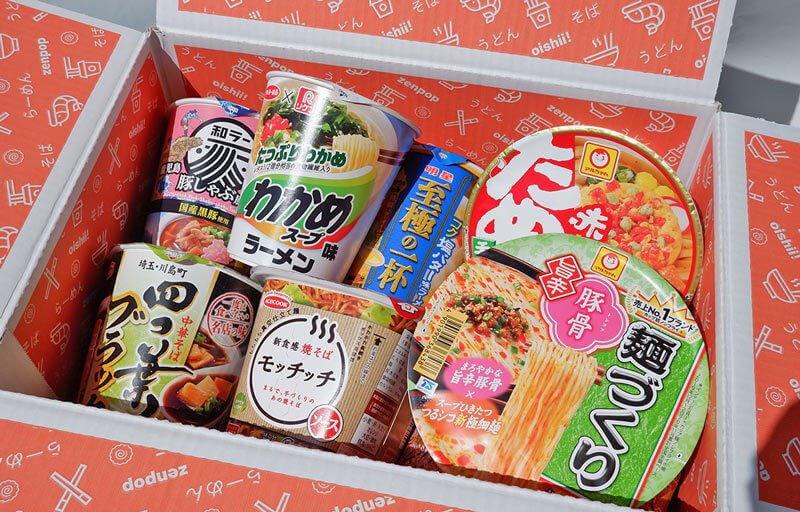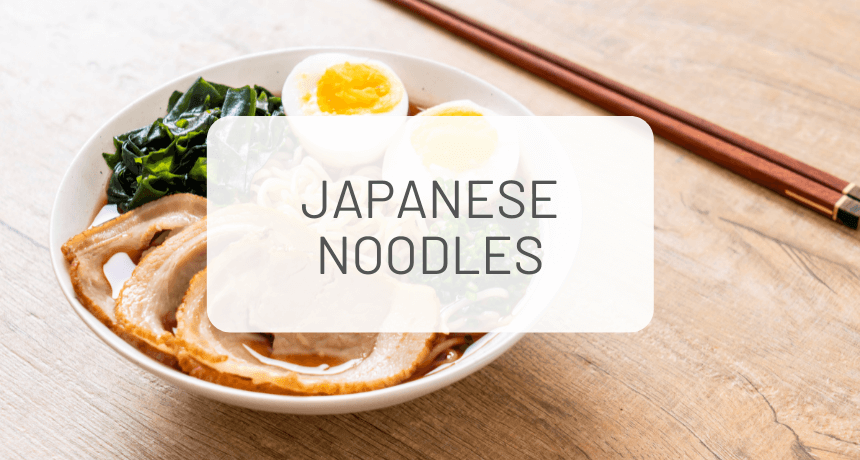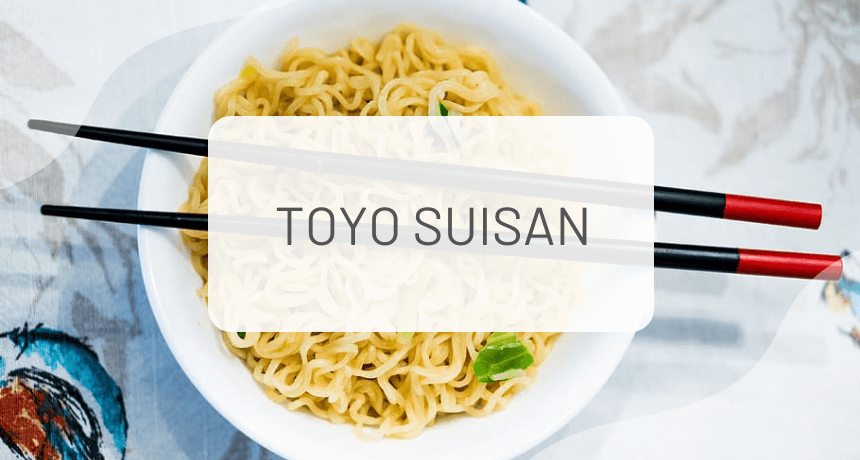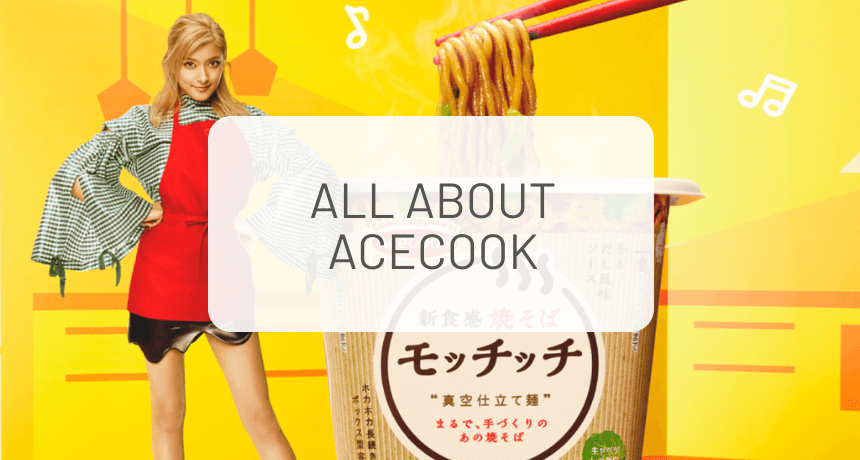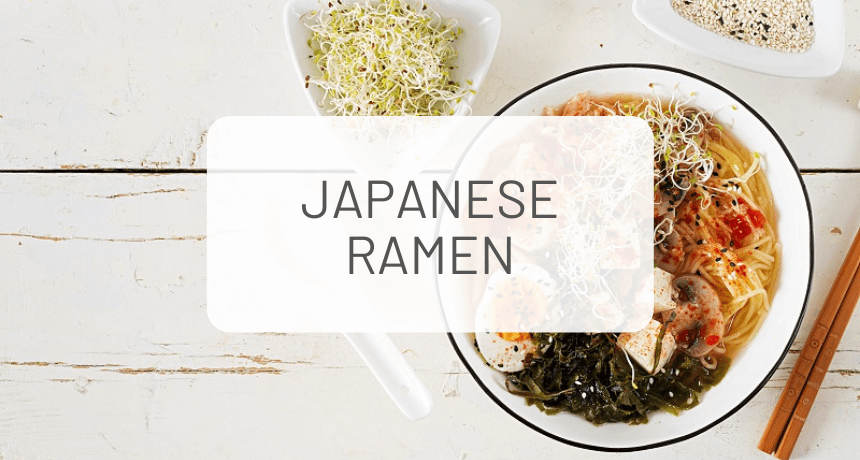
Japanese Ramen: The Ultimate Guide 2023
Alright, alright, alright. Japanese ramen. You’ve seen Naruto slurping them for years, or maybe the late Anthony Bourdain in his show No Reservations. You know them as a Japanese dish that is rapidly becoming popular around the world, but don’t know exactly what they are? Here is everything you’ve always wanted to know about Japanese ramen.
Ramen is a type of Japanese noodles that originated in China. They are made from wheat flour, kansui, salt and water. Done and over. They became a popular staple of Japanese cuisine during the post war period, during the Shôwa Era. And the best invention of the 20th century, also known as Instant Noodles, was a gift from Momofuku Ando in 1958.
Although the ingredients to make ramen are very simple, and you may only visualize a tasty bowl of noodles swimming in their soup, there is at least one variation of the japanese noodle dish per city in the country. There are officially 684 municipalities classified as cities throughout the archipelago. And let’s not even mention the thousands of towns, and villages, where a hidden ramen master might hold the secret to the best noodle dish in the world.
Now, let’s get down to business. You came here to learn all there is to know about Japanese ramen, and I will deliver. In this article, I will go through:
- The Soup & the Noodles
- The 4 Flavors of Ramen
- Typical Ramen Toppings
- Nutrition of Ramen
- How To Order Ramen
- How To Eat Ramen
- Regional Varieties of Ramen from All Over Japan
- Where You Can Eat Regional Ramen
- Five Halal And Vegan Ramen Shops
1. The Soup & The Noodles
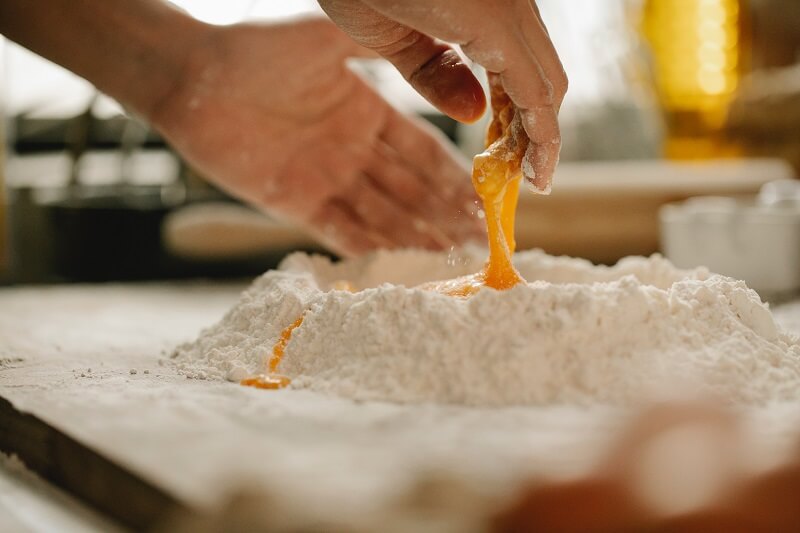
Ramen’s unique flavour comes from one of its four ingredients. In addition to wheat flour, salt, and water, they use kansui (鹹水, かんすい), which is a special type of alkaline mineral water.
Ramen soup is usually prepared with a chicken or pork-based broth combined with several ingredients such as konbu (kelp), katsuobushi (skipjack tuna flakes), niboshi (small dried sardines), beef bones, pork bones, shiitake and onions. Other alternatives are prepared with vegetable-based broths. Tare is often added to the broth to make the soup.
Tonkotsu (豚骨, "pork bone"; not to be confused with tonkatsu) soup is a translucent-looking broth with a white color. It is reminiscent of Chinese baitang (白湯) and features a thick broth made by boiling pork bones, fat, and collagen over high heat for...hours. This gives the broth a warm pork flavor and creamy consistency that rivals milk, melted butter or gravy. Despite tonkotsu technically being one kind of broth, some people consider tonkotsu ramen (a specialty of Kyushu) to be a separate flavor category.
2. The 4 Flavors of Ramen
When we talk about the type of ramen, we talk about the broth. Across Japan, there are 4 main types of ramen and they are:
Shōyu (醤油, soy sauce) ramen
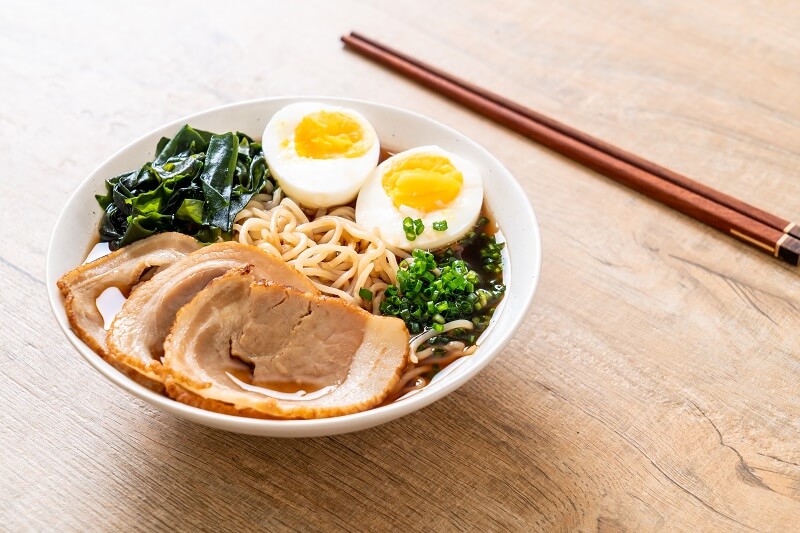
Maybe the standard ramen, although, we’re not calling favorites. The name comes from, you guessed it, the soy sauce that is generously used in the preparation. Shōyu ramen are savoury, and very salty.
You’ll find the curly noodles in a lightly brown colored broth, which is often made with chicken or vegetable broth. Beef or pork broth are also used for this type of noodles.
There are a lot of diverse toppings that can be used for shōyu ramen, but some of the most popular are bamboo shoots or menma, green onions, ninjin (carrot), together with egg and beef. Classic. Did I say that already?
Shio (塩, salt) ramen
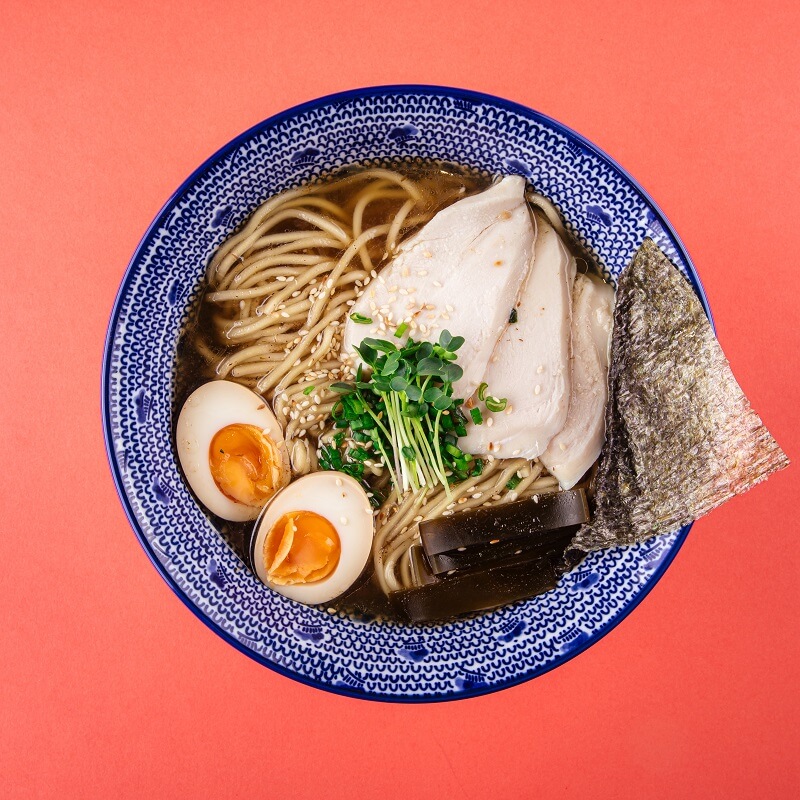
This one is the OG ramen. By far the easiest to prepare. The broth is pale, somewhat yellowish and prepared with a lot of salt, chicken, vegetables, fish, and seaweed.
As opposed to the shōyu ramen, the noodles served for shio ramen are flat, and not curly. It doesn’t change much to the taste, but will have a different texture! Each to their own preference.
Miso (味噌) ramen
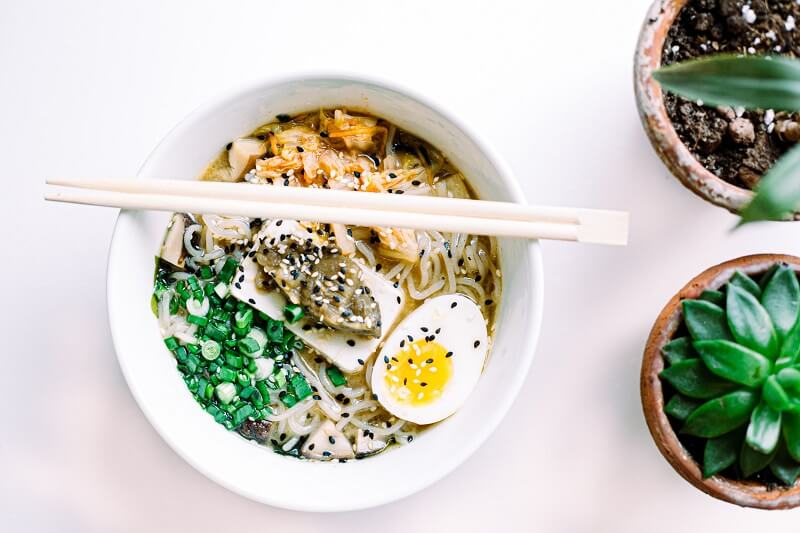
This is a flavor that is originally from Sapporo, on the northern island of Hokkaido. Miso is actually a seasoning made from fermenting soybeans together with salt and kōji (a special type of fungus, and yes, before you ask, it’s edible).
It might be one of the most recent variants of flavor. They have a thicker and creamier texture than shio or shōyu ramen. It’s a preferred flavor for the cold winter month, to add a little more energy to your meal.
Karē (カレー, curry) ramen
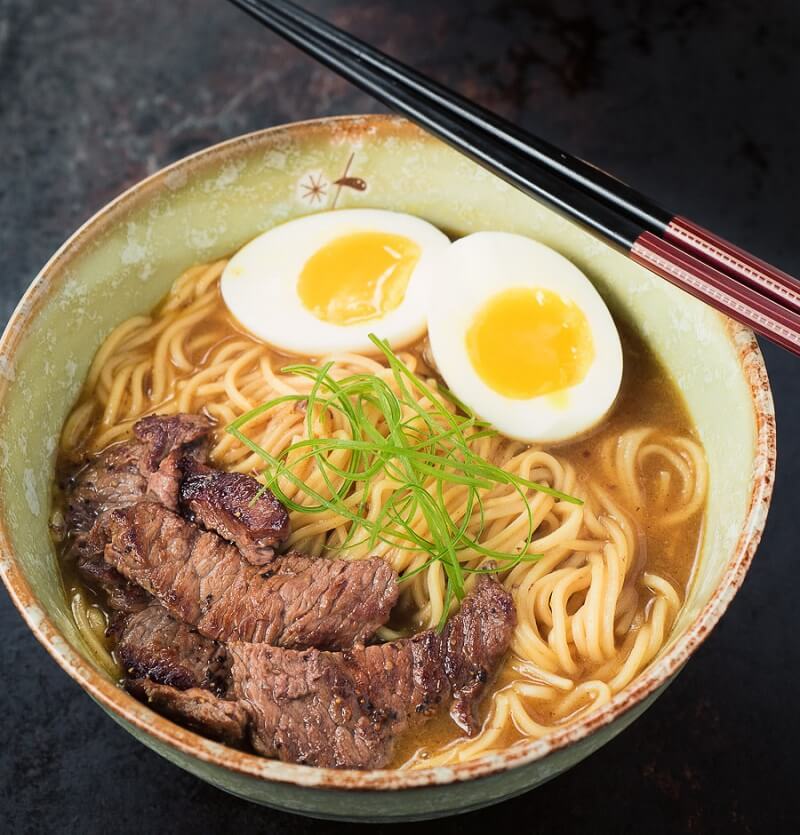
No, not Indian curry. Not Thai curry either. Japanese curry. These ramen are served in a delicious curry soup. Have you ever tried Japanese curry before? It has this unforgettable slightly sweet flavor. Japanese curry is not spicy, although sometimes advertised as such. It’s nothing compared to its Indian and Thai counterparts.
Many places claim to have invented this version, but there is no way to know for sure where it’s from, and when it was invented. One local ramen chef must have spontaneously, or erroneously served his noodles in the wrong bowl and: EUREKA! That tastes awesome, was the first thing that came to mind.
3. Ramen Toppings
There are so many different toppings. And masters might tell you that you can only eat some with a specific type of ramen. But just between us, we don’t care. I believe you should top your ramen to your liking.
First things first: the meat. Now, there are alternatives for you vegetarians out there, but ramen are technically not a very vegetarian, and even less vegan friendly meal.
Char Shu (チャーシュー, 焼豚 as chāshū)
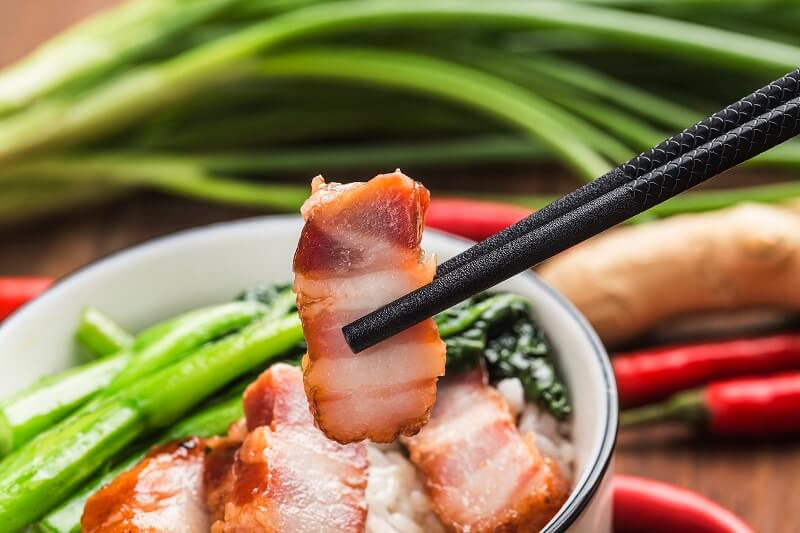
Sliced roasted, or boiled pork, is the main ingredient for most ramen dishes. Different cuts can be used, from belly (the juiciest) to pork butt, which gives you a leaner cut.
Char siu is regarded as a dish from cantonese cuisine, and means “fork roasted”, coming from the way it is prepared: long strips of pork, well seasoned, skewered on long forks and roasted over a fire or in an oven.
In Japanese cuisine, however, it is prepared differently: braised at low departure.
Menma (メンマ, 麺麻)
A classic condiment in Japanese cuisine, that you can find in many different dishes: bamboo shoots. They are dried in the sun and added without any further transformation to ramen or other dishes. The texture is quite crunchy, and balances well with the chewy noodles!
Naruto (ナルト, fish cakes)
No, not the manga. Not the city either. Naruto the fish cake is made from processed fish paste. The whirlpool shape that you may have seen though is inspired by the whirlpools swirling near Naruto bridge in Tokushima prefecture.
Negi (ねぎ, onions)
A local tradition here in Kansai is to add green spring onions to your ramen. Chopped finely and sprinkled with love on top of your ramen just before serving. In Kanto, in and around Tokyo, they prefer to season their noodles with leek. But we don’t discriminate.
Boiled Eggs
Whether you want one, two, or three boiled eggs, everything is possible in the realm of ramen. However one is sufficient in most cases. The eggs are usually soft-boiled, just to the point where it stops being runny. However having a little egg yolk drip in your noodles is awesome too! You should give it a try.
The egg is often slightly battered with a special sauce in preparation. Each restaurant makes their own, so it’s hard to know how they are prepared. One thing is for sure: the taste of the rich, thick yolk is irresistible.
In some case you may even get to taste a soy egg, ajitsuke tamago 味付け玉子. They are cooked in a mixture of soy sauce, water, sugar, herbs and spices.
Moyashi (もやし, bean sprouts)
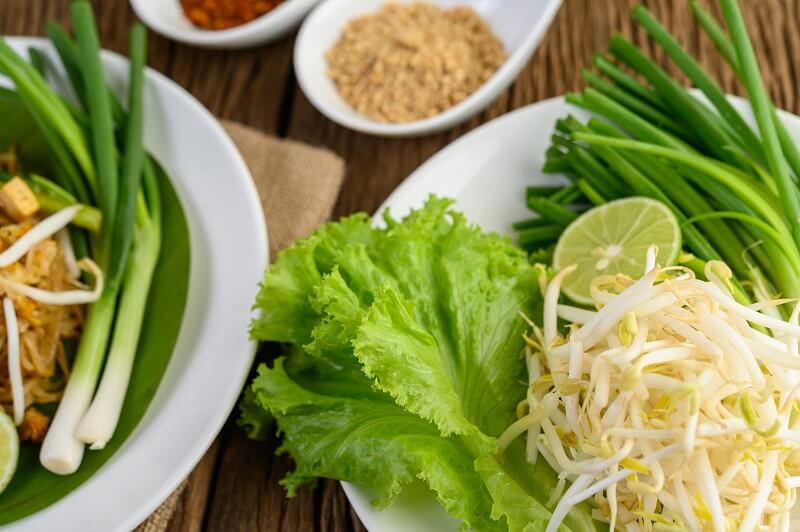
The white, long, bean sprouts that you sometimes see in saladas or hotpots? Rings a bell? Well, they are artificially grown. That’s right. They are not receiving a single minute of sunlight before being pulled out of their soil, and prepared to be shipped to the millions of restaurants and supermarkets that use them every day in their meal preparation. Rich in vitamin C, one noticeable regional difference is well known: northern Japanese bean sprouts are thick and give you a nice crunch, while those from western Japan are softer, long, and thinner.
Corn
Yup, corn. Just corn. The same yellow corn you’re familiar with. Nothing more. Nothing less.
Butter
For more creaminess, texture, and fat, miso and shio ramen regularly use butter in their meal prep. The practice comes mostly from northern Japan, where winters are cold and rough, and people need to add more fat to fight off the low temperatures. The pat of butter is usually added on top of the noodles right before serving.
Nori (のり, seaweed)
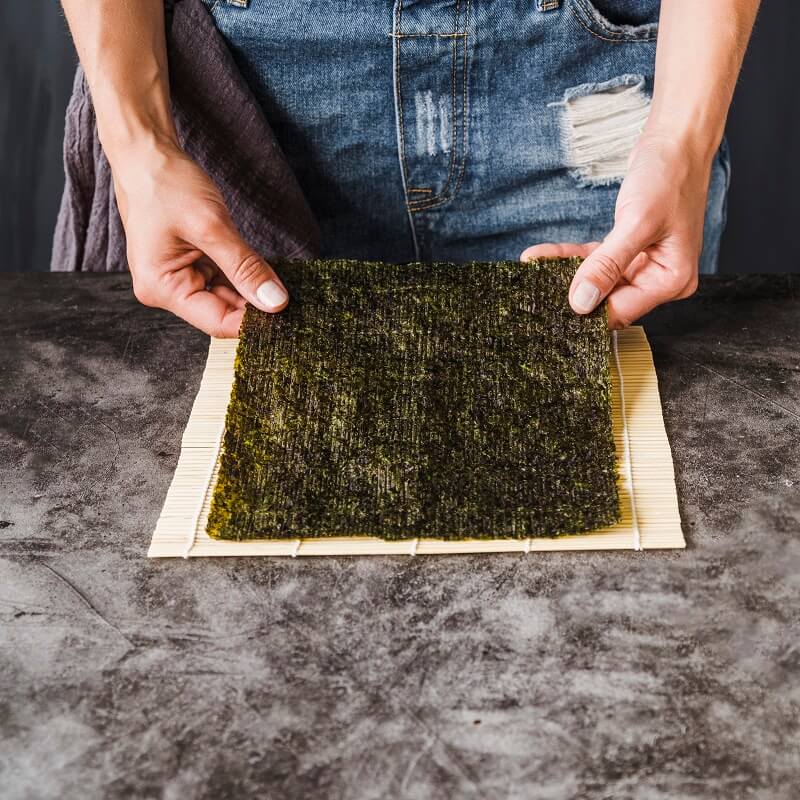
It’s in the subtitle, it's seaweed, and it’s edible. Nori is a dried seaweed and commonly used to wrap makizushi. You’ve seen them around your beloved california rolls or the classic onigiri. They have a crisp texture and a lovely aroma.
To make them, a process similar to papermaking is used, wherein the nori sheets are shredded, and dried on the rack. You can find them readily available in every supermarket across the country.
Their crisp texture and aroma are also used in sushi. They provide high mineral and nutrient content, and a whiff of the sea. They are highly water absorbent, which makes them loose their crispness in an instant, which is why they have to be stored properly, and only used as the last cherry on top!
Wakame (わかめ, more seaweed)
Here we have another variety of seaweed. Wakame, by its latin name Undaria Pinnatifida, is a species of kelp that grows in the vast northwest of the Pacific Ocean. It’s got a slight sweetness to it, and a very distinctive flavour with a firmly chewy texture.
It’s often preserved dry, and very small. Once in contact with liquid, especially hot water, it quickly expands. Don’t use too much of it, or take the risk to have your bowl of noodles transform into a bowl of seaweed.
It’s a very nutritious condiment, and familiar to Japanese people.
Beni shōga (紅生姜, pickled ginger)
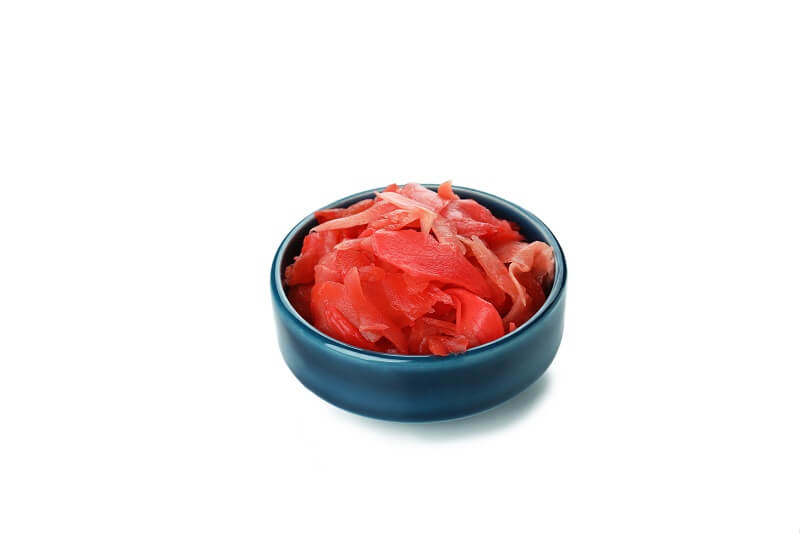
Especially loved in a bowl of tonkotsu ramen, beni-shoga, or pickled ginger, is an excellent addition for contrasting flavors! The ginger is pickled in salt, or sun-dried and pickled in plum, ume, vinegar.
It’s not exclusively used to ramen, and is common in many other japanese dishes like okonomiyaki, or takoyaki.
Alternatively, umeboshi, pickled plum, is also very popular among ramen lovers.
Kikurage (キクラゲ, wood ear mushrooms)
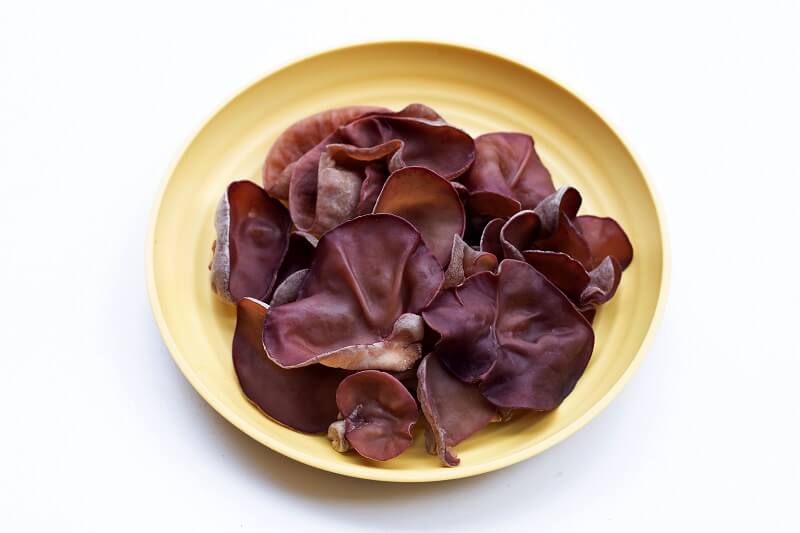
Auricularia auricula-judae. Wood ear mushrooms. These black mushrooms grow on fallen trees and dead branches from spring to autumn. This species is common to East Asia, and not found in many other regions.
Oils
Olive, or sesame oils are the typical additions to the soup. Each chef, and each aficionado has its own preference: up to you!
4. Nutrition of Ramen
You’ve been wanting to ask this question. I know. Are ramen noodles healthy? The answer is: no. Sorry. I know, it breaks your heart. I’m still picking up the pieces of mine, but the truth is, ramen are very salty, contain a lot of fat and oils, and a few vegetables. However, that doesn’t mean that you can’t enjoy them! In moderation please.
If we’re just going to do the calorie talk, a standard bowl of ramen without any toppings or seasoning; basically not what you’re likely to order, starts at about 500 kcal and can go up to over 2,500 kcal, depending on what it comes with.
Now, here is one solution: instant ramen. Yes, yes, you heard right. Some instant ramen bowls have a calorie count of around 300, paired with a lovely seasoned salad, you can put together a quick, easy and healthy meal.
But let’s not lie to ourselves, a big, heavily topped bowl of ramen is what we all drool over. And I’ve got good news, enjoy it! One bowl, once in a while, on a day where you’ll eat slightly lighter for the other meals, is perfectly fine.
Enjoy!
5. How To Order Ramen
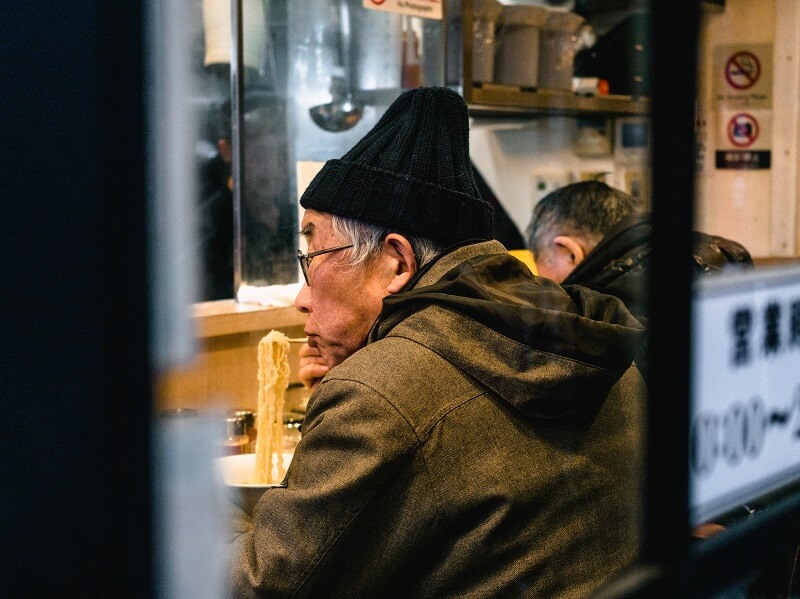
Time for some personal advertising here. You might not have a ramen restaurant near you. Maybe you are lucky enough to know some good ramen shops in NYC or in LA, or elsewhere in the world, but there is another, easy way for you to get your ramen fix.
Three clicks on our ZenPop website, and you can subscribe to a monthly Ramen Box delivery. How does that sound?
Every month, we curate some of the best, regional, traditional, and original instant ramen and noodles from around the country and put them in a box that we ship straight to your door.
6. How To Eat Ramen
Remember that time you held chopsticks for the first time in your life? Two thin wooden sticks, and you thought: how am I supposed to grab food with that? Holding them was hard enough, let alone getting a grip on slippery noodles.
Well, well. There’s no escaping it. Ramen are traditionally eaten with chopsticks and a soup spoon. Most Japanese ramen restaurants won’t even have any other cutlery for you. If you’re at home, we can close an eye should you opt for a fort! But remember, ramen are not spaghetti.
One thing you have to keep in mind, is that the noodles are quite absorbent. The longer they stay in the soup, the more liquid they absorb and quickly they will become mushy.
Don’t hesitate to slurp away. It's not considered rude when eating noodles. It’s actually the proper way to eat them. Some locals might give you a look if you’re eating quietly in your corner.
7. Regionalities
Let’s get to the nitty gritty of ramen. I will write another, more detailed article about local ramen preparation. However, I’ll give you a quick taste for what Japan has to offer. Regional changes have an impact on the noodles, and on the soup, as well as the topping.
From the lists that I wrote above, you can imagine that the combinations are endless.
Tokyo Style
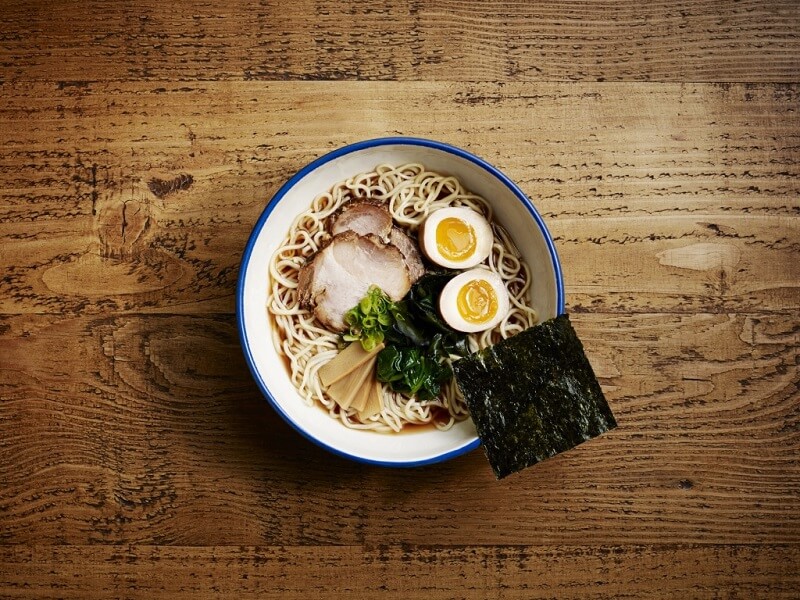
Obviously, the capital has its own version of the dish. The noodles therein are curly, and a little thinner than elsewhere, served in a soy-flavored chicken broth.
The widespread soba restaurants have influenced the ramen chef of the metropolis, who enjoy adding a spoon or two of dashi to their broth. Some districts like Ikebukuro are particularly famous for their ramen scene.
Sapporo Style
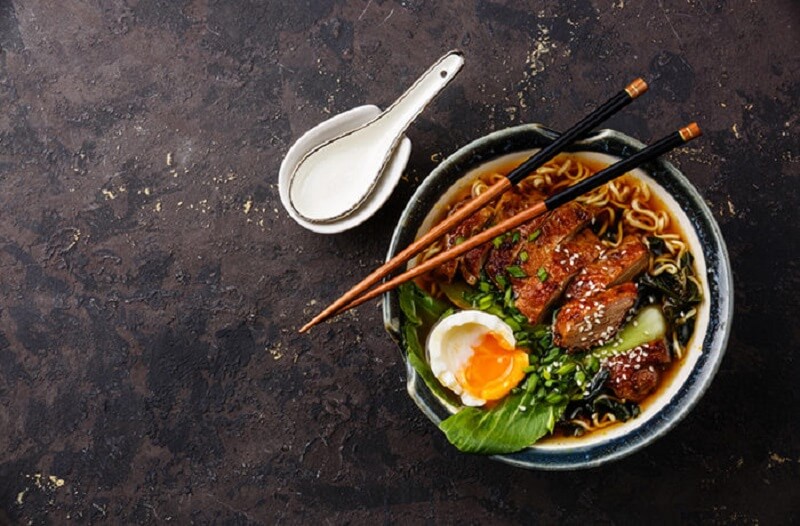
I mentioned it before. The north is cold. Nobody there is claiming that winter is coming, rather they just have to put up with the fact. Butter and sweet corn are some of their preferred toppings on their rich miso ramen.
Kyushu Style
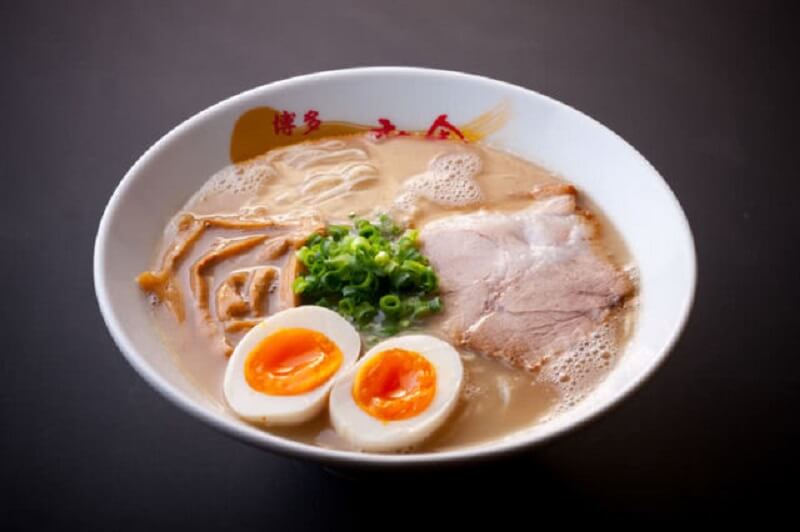
They are called hakata ramen, and originated in the charming city of Fukuoka, in west, west Japan. This is a tonkotsu style, which means…? Pork bone broth. It’s milky, it’s creamy, it’s tasty. Crushed garlic or sesame seeds go well together.
8. Where to find those varieties
ZenPop. I said it already, I’ll say it again: if you’re looking for ramen, look no further, and check out ZenPop. We’ve got some of the best local specialties sourced from our expert, tasted by our Top Chef contestants, and recommended from the bottom of our hearts.
Every month, one box. You order, we deliver.
9. Halal and Vegan Ramen
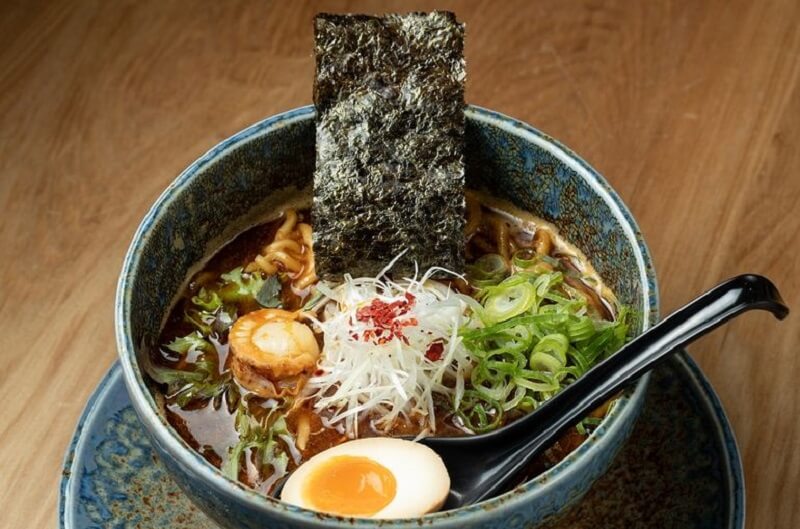
I’ve made you crave some Japanese noodles all the way through this article, I wasn’t going to let you down. Although I mentioned that it’s hard to find vegetarian, or vegan ramen options, it’s not impossible. Halal ramen, or halal japanese noodles are becoming, ever so slowly, available.
Some restaurants are starting to develop their alternative, animal product free, or prepared in accordance with religious traditions.
Instant noodle options are available too, like this delicious vegan preparation that we served in a previous limited edition pack.
For those of you who desire a halal version, you can find a list of options here.
Last Few Words
That’s it. This was your ultimate guide to Japanese ramen. Should you still have any questions, send me an email at [email protected] and ask away! I’ll be waiting.
If you can't wait any longer, which I understand, we've got you covered in our ramen pack right here!

